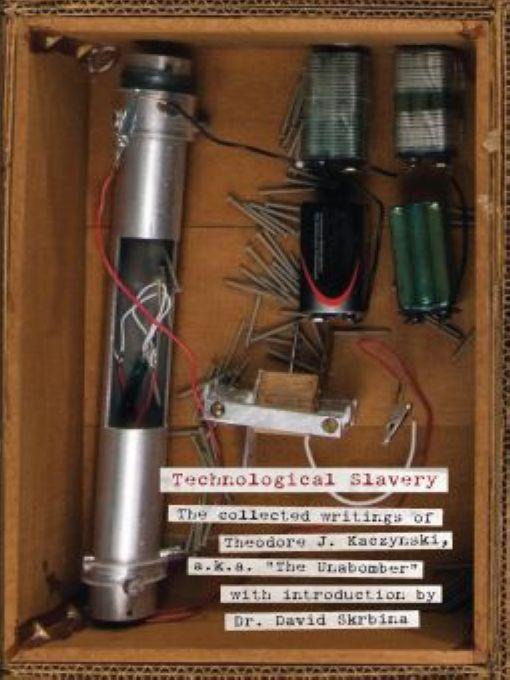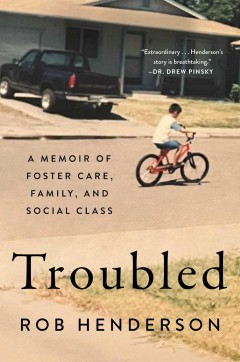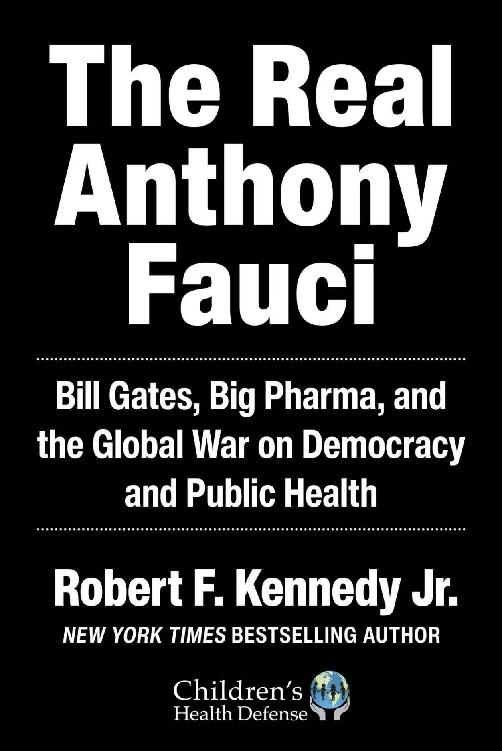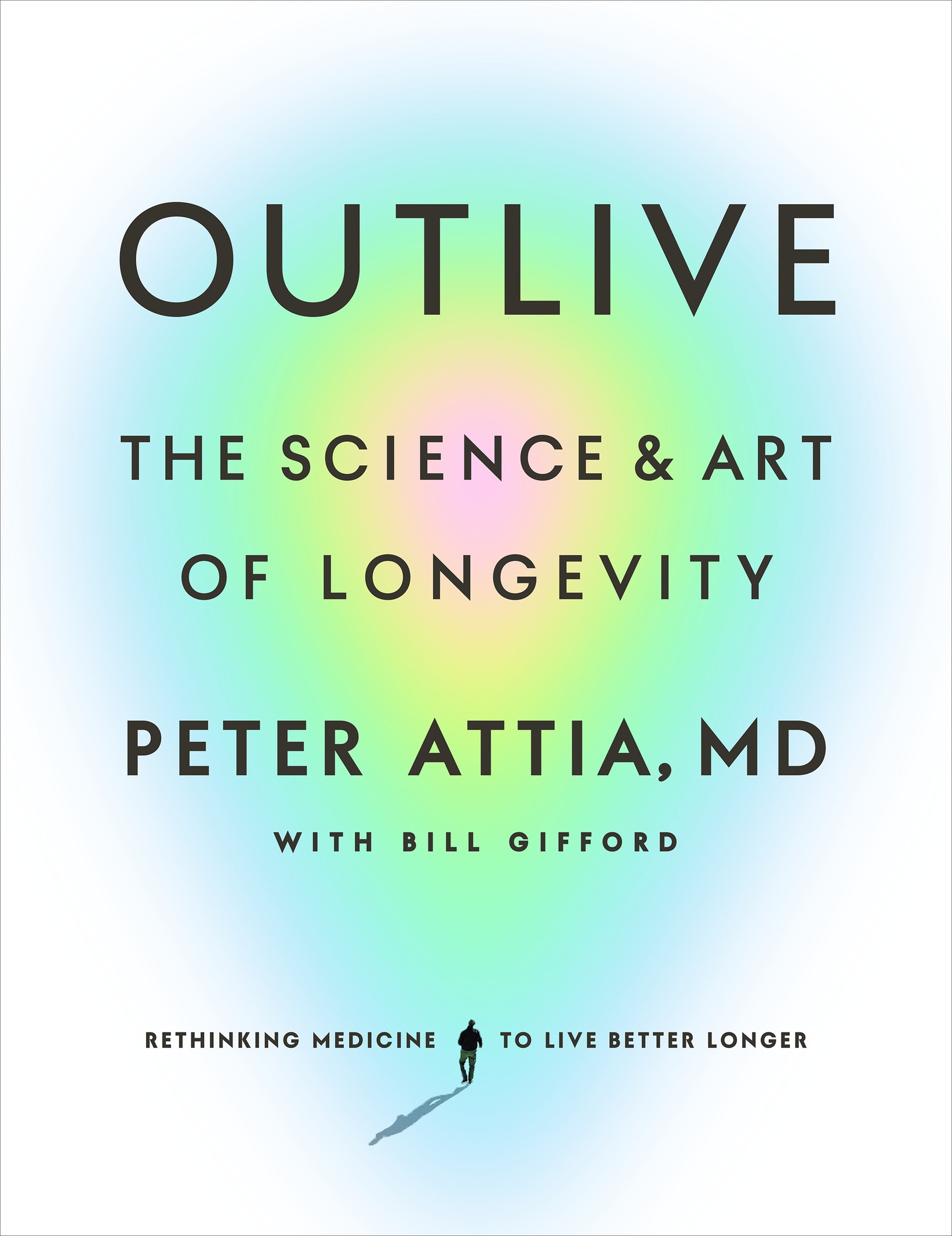The Electric Car’s Shrinking Role in Reducing Oil Demand March 2022
Examining Transportation Oil Demand
There are over a billion cars globally and over 200 million in the
US. The world can produce ~85 million vehicles per year. It would still
take over a decade to replace the global car fleet with electric models
assuming no growth in total car numbers. Many think that oil demand
can't fall faster than this replacement rate or that only autonomous
electric taxis can speed the process up. The vehicle count and oil
demand relationships are more complex.
Where Does a Barrel of Crude Go?
Crude oil is a mixture that varies widely based on the geological
conditions it developed in. It can contain gases, liquids, waxes, and
asphalt. Transportation, industry, commercial, and residential sectors
are the significant crude users in the US.
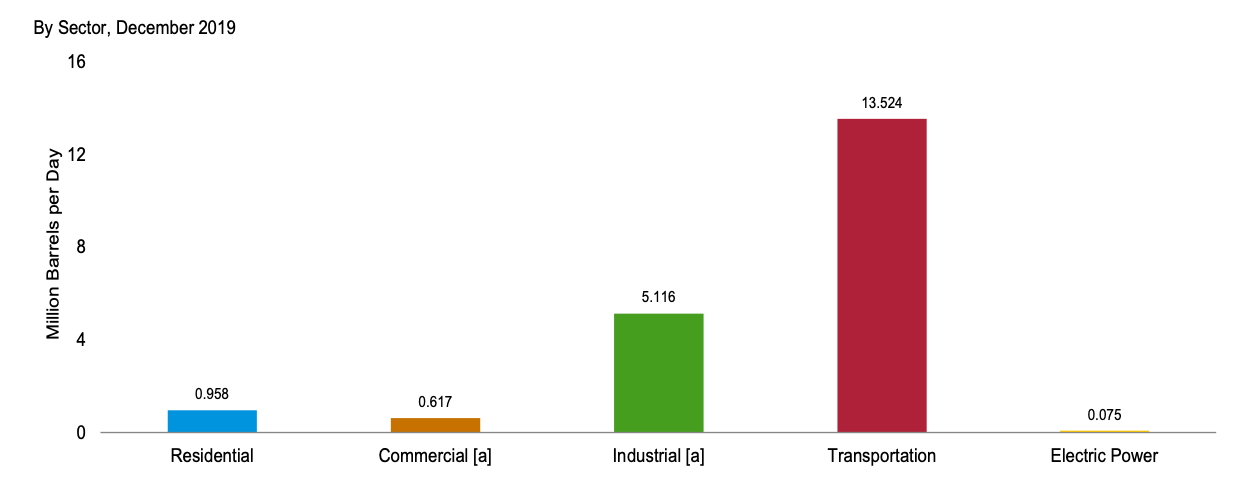
Source: EIA
Roughly 90% of the liquid products go to transportation. A small
amount goes towards heating oil and industrial processes. Asphalt, wax,
petroleum gases, and other products make up most industrial crude oil
demand.

Source: Data from EIA
Transportation fuels in the US are gasoline for cars and other light
vehicles, diesel for trucks (like semis), buses, or trains, jet fuel for
planes, and residual fuel oil for ships. Only 2%-3% of passenger
vehicles use diesel.
Transportation is the driver for crude demand. Refineries have
techniques like catalytic cracking that turn heavier wax and asphalt
into diesel and gasoline. They have some flexibility to adjust the
product mix. Extreme changes would likely need facility retrofits and
possibly cause market dislocations for minor components like lubricants.
The Commute is Overrated
Americans drive everywhere they go - 87% of trips are by car. But
only 15% of household trips and 27% of household miles are for commuting
to work. Household miles are only two-thirds of total vehicle miles,
and the numbers are pre-COVID and reflect lower telecommuting shares.
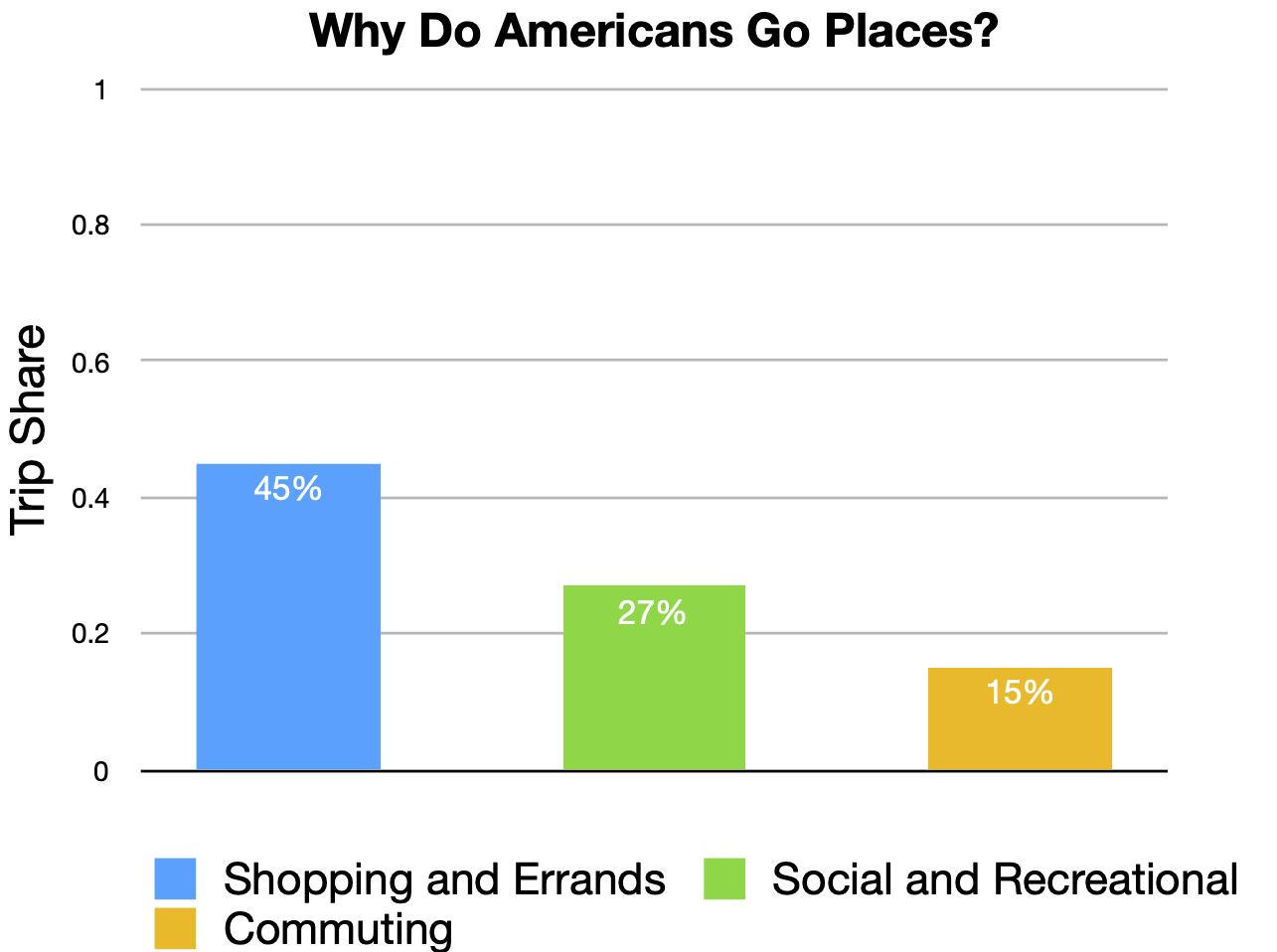
Source: Bureau of Transportation Statistics
Most trips are for errands, visiting friends, and other non-commuting
purposes. The heterogeneity of trips opens up cars to unbundling and
oil demand falling faster than gasoline car numbers.
Death by 1000 Cuts
Gasoline cars will sit in garages for a long time to come. That doesn't mean their yearly mileage will stay the same.
The Improving Economics of Electric Vehicles
Electric vehicles have lower operating costs than internal combustion
engine cars and trucks. These savings come from lower fuel usage and
less maintenance. They are usually more expensive to buy upfront because
batteries are costlier than fuel tanks. As batteries decline in cost,
more applications become economical to switch to electric vehicles and
applications with higher annual mileage crossover first. Electric
vehicles are already cheaper upfront in applications like delivery vans
and will be for virtually every application by 2030.
Bots and Vans Take on Errands
Shopping and errands make up 45% of household trips. Amazon,
Instacart, and other delivery companies keep growing their market share.
Instead of a typical household driving 10-15 miles per day for errands,
a vehicle serves multiple families driving 80-100 miles per day.
Vans and Cargo Bikes
Applications with predictable miles are the sweet spot for
electrification. There is no need for a 400-mile battery pack "just in
case." Driving lots of miles makes the operating cost reduction from
electrification payoff sooner. The replacement cycle for these vehicles
is faster because they accrue more miles per year.
Electric vans are already cheaper than gasoline vans in most delivery
applications. The adoption speed limit is set by how fast automakers
can design and build new electric vans.
In dense cities, electric cargo bikes are cheaper than vans. Their
agility allows them to make deliveries faster and their smaller range
and capacity isn't a problem.
Bots
Vans on long routes work well for less time-sensitive deliveries that
are non-perishable. Bots look to take on time-sensitive deliveries.
The smallest class of vehicles, the sidewalk bot, is already scaling
rapidly. The smaller and slower the bot, the easier it is to automate.
The consequences of a fifty-pound sidewalk robot hitting something at
four miles per hour is dramatically smaller than a five-thousand-pound
car hitting something at sixty miles per hour. The result is that
sidewalk bots have already completed millions of deliveries even as
their numbers continue to grow.
Bike lane bots are the next size up and excel at small grocery
orders. They go faster, further, and weigh more. They are still in
testing but promise grocery delivery at a fraction of what Instacart
must charge. Companies like Wal-Mart are already building partially
automated grocery warehouses that allow employees to load bots without
being forced to traverse the regular store.
Mini-car size bots like Nuro round out the list. Automation is still
easier than robot taxis. The vehicle does not need to protect occupants,
plus it can travel at reasonable 30 mph speeds and avoid congested
streets. Nuro bots have been in testing for Wal-Mart and Dominoes.
Others think bots will travel in tunnels instead of on roads.
Pipedream Labs hopes to use bots in a 12" tube to deliver groceries and
packages to your house. Like fiber internet, this promises better and
cheaper service but slower rollout times due to intensive CAPEX.
The upshot is that large numbers of gasoline car trips can be done
cheaper and more conveniently with electric vehicles. These technologies
are much more mature than robot taxis.
Moving Humans
Mode shifting promises to reduce oil demand even without autonomous taxis.
Long Car Trips
Cars dominate trips of less than five hundred miles. The hassle of
large airports negates the speed of the plane. 6-18 passenger electric
commuter planes flying from small airports promise to change the math. The savings from fuel and maintenance mean these flights will be cheaper and faster than driving.
Trips over 100 miles make up around 15% of total household vehicle
miles. Electric commuters eating that share would double air passenger
miles assuming only one person per car. Air passenger miles are already
over 10x higher than transit passenger miles.
These aircraft can eat more traditional hub and spoke flights than
their 400-500 miles starting range suggests because of improving battery
energy density and their use of small airports. The possible impact is
millions of barrels per day in the US alone.
One startup decided to
make an electric sea glider instead of a commuter plane because the FAA
is slam-packed with applications and won't review new ones for years.
Sea glider approvals go through a different department with a shorter
line. Better batteries and electric motors kicked off a sprint that will
start to see fruition in the late 2020s - assuming some startups live
through the FAA process.
E-Bikes and Scooters
People like riding e-bikes better than regular bikes because they can
go faster and further. Many trips in cities are quicker on bikes than
in a car. Trips under 10 miles make up the majority of trips and around
30% of vehicle miles.
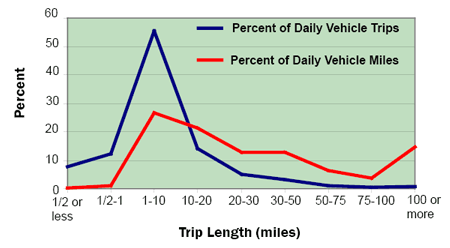
Source: Average Trip Miles: Federal Highway Administration – 2008
The main holdup is cities building protected cycling infrastructure
that makes riders feel safe. The infrastructure itself is cheap, but it
is time-consuming working through planning and engineering departments.
Ridership can jump rapidly once that infrastructure does come. The
leading cycling cities can have almost 50% of trips done on bikes.
Rental bikes and scooters also have piles of potential. Early
deployments were controversial, but things died down because the
vehicles were expensive to charge and maintain. Newer models are more
durable, and partial autonomy promises to increase value. When humans
are riding, the humans steer. The scooter drives itself when there is no
rider. The scooter can reposition to a better area, park itself
correctly, move to a charger, or head to the location of the next rider.
Costs go down while value goes up. Like the sidewalk bots, the
technical challenge is manageable, especially with teleoperators that
can intervene when there is trouble.
Light electric vehicles pair well with Bus Rapid Transit (BRT). BRT
lines are another inexpensive technology that is difficult to move
through city bureaucracies. BRT and light electric vehicles could
provide speedy mass transit to American cities of any density without
breaking the budget.
Within Household Substitution
Multi-car households tend to have one car that sees more miles
because of a longer commute or always being used for joint trips. If a
family buys one electric vehicle, it would be rational to use that car
as much as possible due to its lower operating costs.
Robot Taxi Revolution?
Tony Seba is known for his radical opinion on electric, autonomous
vehicles. Several years ago, he predicted rapid adoption of electric
robot taxis that would be cheaper to use than owning a gasoline car.
We'd send our gasoline cars to the scrap heap and ride electric Ubers.
Instead, we have seen incremental progress. Firms like Tesla,
Comma.ai, and Mobileye keep improving their inexpensive
driver-assistance software, but it still needs supervision. Competitors
like Waymo and Cruise have built expensive, fully autonomous highway
speed vehicles geofenced to small areas. Slow speed and fixed-route
driverless bots and trucks have also made progress.
The flexibility of electric drive trains means that even if we get
driverless cars, other form factors will unbundle many car trips.
Traffic makes unbundling even more likely. A Seba vision world would
lead to vehicle miles roughly doubling from additional empty trips
between fares, not accounting for new demand. The autonomous revolution
requires reforms to price road access and increase capacity through new tunnels,
toll roads, or using current road space more efficiently. Regulatory
hurdles and environmental reviews that drag on for years ensnare
congestion pricing schemes like New York City's. Cheaper and more
convenient substitutes, like delivery bots and e-bikes, should have
strong demand.
Falling consumer oil demand looks much more like driving the Camry
6000 miles per year instead of 12,000 miles rather than a shiny new
electric car in every garage or robot taxis swarming everywhere.
Medium and Heavy Trucks
Trucks use about a quarter of ground transportation fuel. Their
electrification promises to have an outsize impact on oil demand.
The Technical and Economic Challenges
Until recently, most believed that long-distance battery-powered
trucks were not possible. Automakers try to make electric passenger cars
as light as possible to improve their range. Trucks carry heavy loads
that sap batteries. But if you use high-energy-density battery cells,
take care to reduce wheel friction, and have an aerodynamic design, you
can make a practical truck. The Tesla Semi drives 10 hours per day (the
legal limit for drivers) and only charges on breaks. Its total cost is
lower than diesel trucks.
The Tesla Semi is not in mass production. The reason is that it is a
battery hog. And the batteries it needs are nickel-based cells that are
in short supply. Tesla makes more money putting nickel cells into luxury
cars than semis. The chip shortage doesn't help, either. Designs like
the Tesla Semi won't come to fruition until energy-dense cells are more
available.
There is also a long tail of trucks and buses that run less often. An
example is a farmer's truck he only uses for harvest. But most of the
fuel usage comes from the everyday trucks that are first in line to
switch.
Automation Changes the Equation
In response to the shortage of nickel-based cells, automakers are
trying to substitute lithium-ferro-phosphate (LFP) cells into vehicles.
LFP batteries are not as energy-dense as the lithium nickel chemistries
like NCA or NMC. The lower energy density poses a problem for heavy
trucks because it diminishes their range. Adding more batteries adds
more weight and takes away weight for hauling goods. While LFP might
work for local trucks running on "bread routes," they don't work for
long distances. Drivers would waste hours charging instead of driving.
Automation alters the numbers. A self-driving truck doesn't care how
many times it has to charge or when it has to, only the total charging
time. LFP charges as fast as nickel-based chemistries. A robot driver
can stop more times to recharge with minor time losses and can drive
many more hours of the day. The total time charging is roughly 15% when
using superchargers. Lower operating costs overwhelm any advantage a
driverless diesel truck would have in hours driven.
Most trucking automation improvements are incremental. An example is
Wal-Mart using limited numbers of driverless trucks. They travel between
stores and distribution centers on fixed routes, making the automation
challenge easier. In the same spirit, trucks may only be driverless on
interstates at first. Trucks can drive themselves between cities while
local drivers meet them and drive them to the final destination. Trucks
increase utilization, and truck drivers get much better jobs.
Gauging the Potential
BLS estimates
that there are two million heavy truck drivers in the US. In 2019 there
were 281,000 sales of Class 8 Trucks (semis), and some of these drivers
likely drive smaller trucks. Truckers replace their trucks more often
than passenger cars because a fully utilized truck might be driving
200,000 miles per year. Partially automated trucks could double the
yearly mileage by bypassing driver hour limits. The active fleet could
meet the target for complete electrification in less than four years if
one million trucks are the target.
Traditional trucks have unique engines, transmissions, fuel tanks,
and emissions abatement technologies. Electric trucks can share
components with passenger cars. Tesla designed their Semi to share
motors, inverters, battery packs, and other accessories with the Model 3
sedan and Model Y crossover. Production can ramp quickly and benefit
from economies of scale.
Once more nickel mines open or partial automation allows LFP
batteries, the transition can happen quickly. A partially autonomous
electric truck would reduce trucking costs by 50%-70%. Road pricing and
capacity increases become a requirement as that pricing would increase
shipping demand and induce switching from trains. Electric commuter
planes could clear up space by removing cars from interstates.
For whatever reason, charging seems to be a popular topic. Chargers
are simpler than fuel pumps and underground tanks. Tiny startups like
Tesla pre-2015 were able to finance a nationwide charging system that
covered most interstates. There are standalone charging businesses
competing as well. Adding strategic chargers along interstates or at
existing truck stops seems well within the market's capability.
Trucking fuel demand could see a several million barrels per day
decrease in the US in a relatively short period through electrification
and the spread of automation.
The Impact on the Oil Industry
Electrification is terrible for oil companies. Or is it?
Predicting Future Oil Demand
Predicting usage is difficult, but demand has a gravity to it. OECD
countries have already decreased oil demand for decades while all
increases have come from emerging markets, especially China. Automakers
can only manufacture new cars and trucks so fast. Electrification will
speed up OECD demand decline while blunting increases from emerging
markets.
Before the pandemic, I thought peak demand would happen around 2027.
It seems more likely now that peak demand was 2019, and we will see a
plateau before significant decreases around 2030.
Oil Prices and Profits
Even small changes in the supply/demand balance move oil prices
dramatically. Both supply and demand are relatively inflexible, so the
pace of electrification matters. If oil demand decreases by 2% per year,
oil companies could still have bumper profits. Each year existing
production declines 5%-7%, so prices must reflect the cost of finding
and developing new supplies even at 2% yearly declines.
The nightmare scenarios mostly happen for oil companies when demand
decreases faster than natural decline. COVID showed us what that looks
like with massive short-term demand destruction and oil markets going
haywire. A similar disjointed market seems unsustainable early in the
transition because gasoline and diesel users see low prices that delay
switching to electric options.
It may seem like a 5%-7% decline is the limit for demand decline, but
that isn't true. The United States used increasing domestic production
to cover sanctions or interventions in Libya, Iran, and Venezuela that
reduced oil production. Woe is to Mohammed bin Salman if he saws up
another journalist when oil is $20 per barrel and demand is declining
swiftly. Liberals, environmentalists, the oil lobby, and every other
American would favor sanctions on Saudi oil.
Being an American oil producer might not be so bad as long as you can weather short periods of ultra-low prices.
Long Term Competition from Synthetic Fuels
Liquid fuels are difficult to displace from long-distance planes,
ships, and plastics manufacturing. Because liquid fuels are pricey on an
energy basis, synthetic fuels using dirt-cheap solar or wind could be
economical. $60 per barrel of oil equates to ~$35/MWh. New solar is
under $30/MWh today. Assuming a conversion efficiency of around 33%, the
breakeven to make fuels would be ~$12/MWh. That is well within possible
future non-grid tied solar technology costs.
Synthetic production pathways tend to produce relatively pure
products. The barrel of crude could be unbundled, similar to how car
trips might be. Changes in transportation demand could incentivize a
wide range of new production capacity in chemicals that aren't classic
synthetic fuels to replace crude byproducts.
Once synthetic fuels are below the marginal finding cost of oil,
operators will only produce existing reserves. Traditional oil reserves
can stay viable much longer than natural gas in competition with
synthetic fuels. Gas has higher fixed costs that synthetic fuels can
exploit. Transporting oil is so cheap that low production cost
reservoirs can produce long into the future without government
intervention.
A $100/tonne carbon tax adds ~$43 to a barrel of oil. Taxes would
have to be steep to eliminate production that often has total costs
under $20 per barrel. Many barrels will be going into industrial uses
and won't burn, anyway. Cheap direct air capture technology can make
existing oil reserves more valuable because it makes it harder for
synthetic fuels to compete if it sets a cap on carbon taxes.
The economics of future oil production are hard to predict.
The Transition is Picking Up Steam
My original guestimate on peak demand comes from the difficulty of
building millions of cars, trucks, planes, and batteries. E-bikes and
other light electric vehicles are the only technology that could
surprise. Their constraint is local governments' desire to build
infrastructure.
Once more factories start up, the pace will hit an inflection point.
Oil demand will start falling at a rate that allows high enough oil
prices to continue to incentivize switching. There will be stops and
starts or switching back and forth, similar to how natural gas and
renewables are displacing coal in the US electricity market. Eventually,
oil-burning capacity will retire, and there will be little support or
service for more expensive internal combustion engines.
Oil sales will eventually stabilize as applications like plastics and
jet fuel make up an increasing portion of demand. Traditional oil
production will become a sleepy industry as synthetic fuels emerge and
set the marginal cost, stopping most new development. The more oil
production Americans take off the market through war or sanctions, the
smaller the rump of traditional producers will be.
The diverse applications of electric power trains combined with
increasing automation and a wide variety of battery chemistries promise
to revolutionize transport and transport fuels.
-
VMT Data
-
Deeper VMT Analysis


